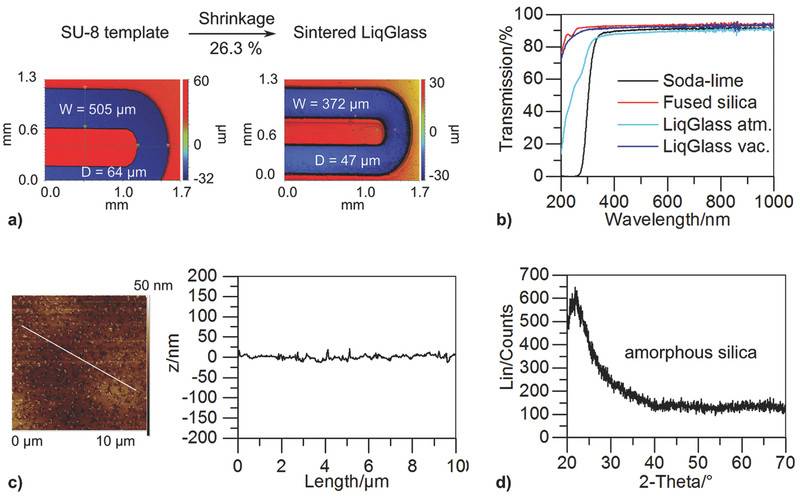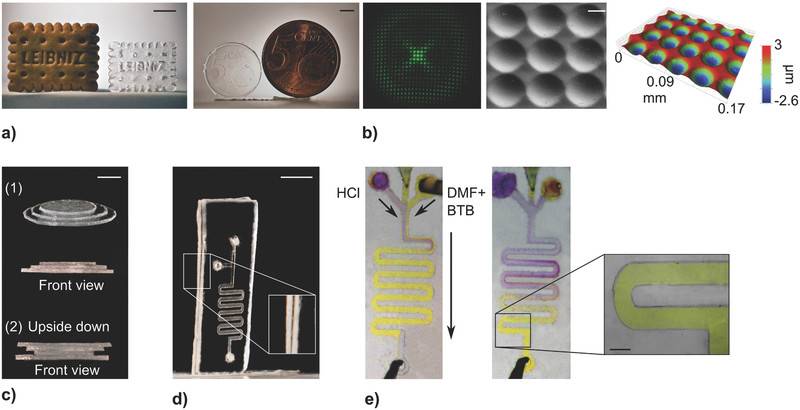Glass is an important material with many outstanding prop- erties for a wide range of applications in science, industry, and society. Unmatched optical transparency paired with out- standing thermal and chemical resistance makes glass the material of choice for many applications such as, among others, capillary electrophoresis for DNA and protein separations, microfluidic chemical synthesis, medical hearing implants or micro-optical applications. Despite their superior properties glasses are often rarely used which is mainly due to the difficult processability. Glasses are primarily structured by masking the substrate with a polymer layer created via lithography and subsequent wet chemical etching using hazardous hydrofluoric acid (HF).
This paper introduces “Liquid Glass” (LiqGlass), a viscous free-flowing, photocurable amorphous silica nanocomposite, which can be structured by room-temperature replication using soft molds made from PDMS. Once cured the LiqGlass com- ponent is converted to a dense high-quality glass via thermal debinding and sintering. The resulting microstructured glass component is chemically and physically identical to commer- cial fused silica glass. Using LiqGlass, it is possible to convert arbitrary physical objects with feature sizes in the range of a few tens of micrometers and surface roughness in the range of a few nanometers into glass rapidly and conveniently. By laminating multiple layers of cured LiqGlass in a layer-on-layer fashion, it is possible to create complex physical structures with closed cavities, microfluidic channels, etc., with thicknesses of several millimeters. The manufacturing process is inexpensive and can be carried out in any laboratory as no hazardous chem- icals or cleanroom facilities are required.

Figure 1. Schematic of the workflow of the LiqGlass fabrication process: 1) Dispersion of amorphous silica nanopowder into the photocurable mono mer mixture. 2) Pouring of LiqGlass against a PDMS template and curing with UV light. 3) If multilayer glass parts are required several cured LiqGlass sheets can be bonded using partial curing. 4) Removal of organic binder by thermal debinding. 5) Sintering of the powder compound to a highly transparent and dense glass body.

Figure 2. Characterization of LiqGlass: a) White light interferometry shows the isotropic shrinkage of the parts during the sintering process and the high replication fidelity. b) UV–vis transmission spectra of sintered LiqGlass under atmospheric conditions and under vacuum compared to commer-cial fused silica and soda lime glasses. c) AFM measurement showing the low surface roughness of Rq = 5.92 nm. d) XRD measurement of sintered LiqGlass parts shows that no devitrification occurs during the sintering process.


